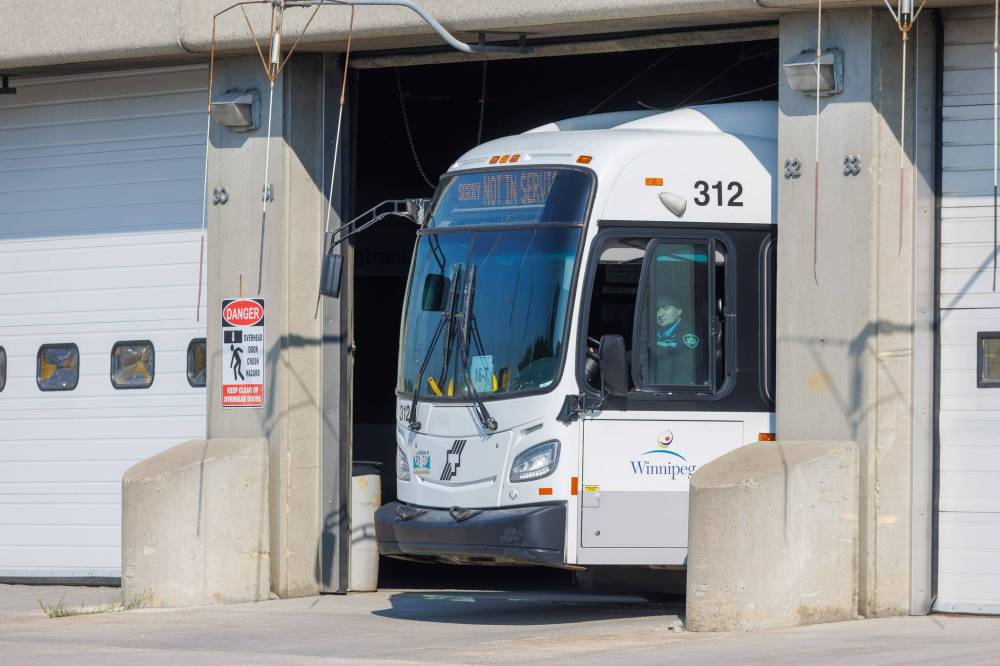Transit analysis shows poorest riders hurt most
Advertisement
Read this article for free:
or
Already have an account? Log in here »
To continue reading, please subscribe:
Monthly Digital Subscription
$0 for the first 4 weeks*
- Enjoy unlimited reading on winnipegfreepress.com
- Read the E-Edition, our digital replica newspaper
- Access News Break, our award-winning app
- Play interactive puzzles
*No charge for 4 weeks then price increases to the regular rate of $19.00 plus GST every four weeks. Offer available to new and qualified returning subscribers only. Cancel any time.
Monthly Digital Subscription
$4.75/week*
- Enjoy unlimited reading on winnipegfreepress.com
- Read the E-Edition, our digital replica newspaper
- Access News Break, our award-winning app
- Play interactive puzzles
*Billed as $19 plus GST every four weeks. Cancel any time.
To continue reading, please subscribe:
Add Free Press access to your Brandon Sun subscription for only an additional
$1 for the first 4 weeks*
*Your next subscription payment will increase by $1.00 and you will be charged $16.99 plus GST for four weeks. After four weeks, your payment will increase to $23.99 plus GST every four weeks.
Read unlimited articles for free today:
or
Already have an account? Log in here »
It’s an unsettling piece of analysis about a big plan and its impacts on its smallest customers.
Looking at the recent changes in Winnipeg Transit routes and stops, a Free Press/Narwal review showed that Transit’s massive new route plan took stops and route coverage from poorer areas of the city, areas that depend on transit more than outlying regions of the city.
At the same time, outlying parts of the city — which use Transit less — saw growth.

MIKE DEAL / FREE PRESS
Winnipeg Transit bus leaves the Osborne Street Garage.
“The old system’s 87 routes and 5,100 bus stops have been stripped down to 71 routes and about 3,800 stops. Despite adding a few hundred new stop locations, particularly in fast-growing neighbourhoods along the city’s outskirts, Winnipeg Transit ultimately cut a quarter of the locations where passengers can board a bus.
“And the impacts are most stark in the neighbourhoods that need transit most. The analysis shows historically underserved communities in the downtown, North End and West End neighbourhoods have lost up to three times as many bus stops as the rest of the city and have seen significant reductions in late-night bus service.”
The study puts meat on the bones of what Transit users were already saying anecdotally — that they were finding the new bus system often meant longer commutes, more transfers and less convenience — especially for bus riders who have found that the reduction of service, particularly later in the day, makes bus use incompatible with work and school schedules.
On the one hand, you can understand what Winnipeg Transit was trying to achieve — spreading service outwards in the city with direct, regular routes to allow Transit to grow its ridership out into the future. But that growth can’t simply take service away from users who have grown to depend on it, especially those without options.
Trying to entice suburban customers away from their current methods of commuting and onto a bus is one thing — dramatically downgrading the service for those who depend on it most is something else again.
What are riders supposed to do if the bus now takes 70 minutes and two transfers, instead of a single bus and a 40-minute commute? The answer is simple, if someone doesn’t have a car and can’t carpool with others — suck it up, and spend your lost time looking out a bus window or standing waiting for the next bus to arrive.
It’s a strange little version of taking captured customers for granted — and it’s far from a recipe for a satisfied customer base.
Just as the problems of the new service first came to light from the individual complaints of frustrated riders, so has something else — and if it’s not a solution, at least a healthy little dose of schadenfreude for all of those whose time is now being wasted.
Everyone who had a hand in the planned bus upgrade, from the mayor and councillors to the route planners with Winnipeg Transit — should have been required to use the transit service as their only manner of conveyance around the city for a minimum of few months.
Perhaps that would have made the needs of those who are already full-time transit users more firmly front of mind, up close and personal. Because longer, more difficult commutes do matter — stolen time matters.
The bigger picture of the future of Winnipeg’s transit system is certainly important. But the smallest part of the picture — the daily grind of the trips taken by individual riders who have no other options — can’t be ignored, just because those riders happen to be trapped in the role of frustrated commuter.





